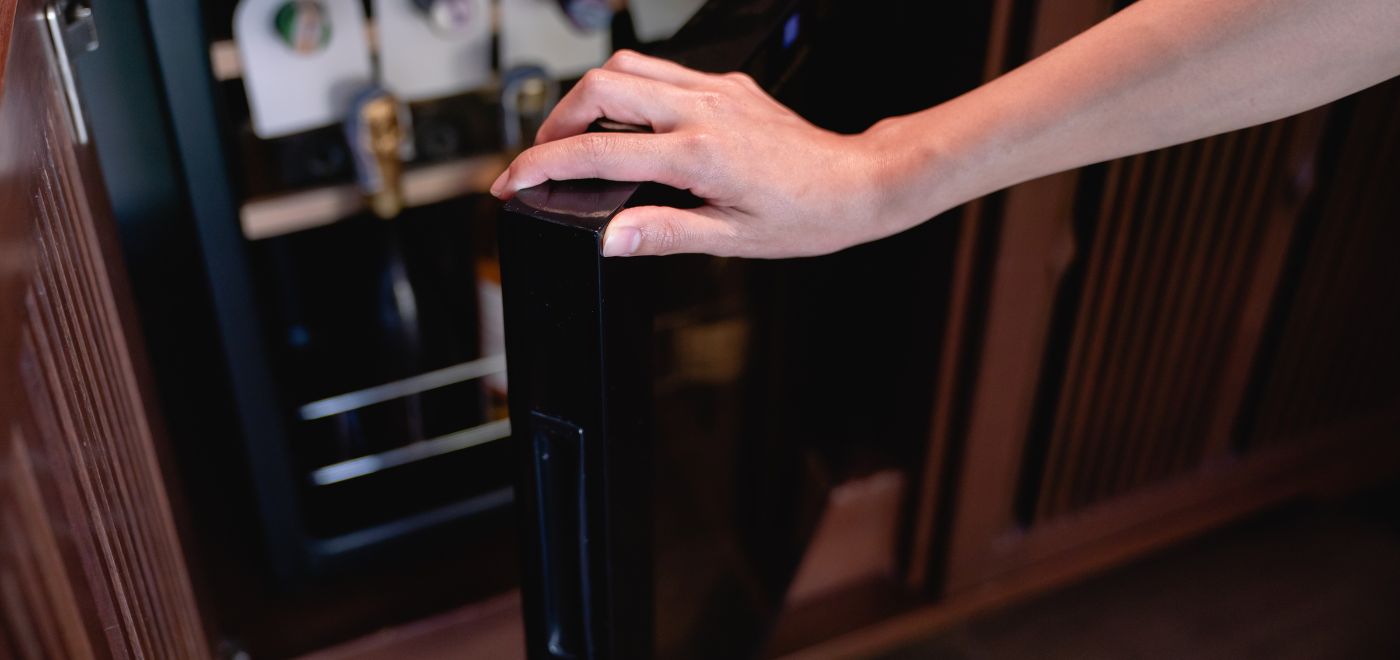![]() An opinion piece by Moritz von Petersdorff-Campen, Co-Founder and Managing Director of SuitePad, on rising running costs and viable alternatives to minibars.
An opinion piece by Moritz von Petersdorff-Campen, Co-Founder and Managing Director of SuitePad, on rising running costs and viable alternatives to minibars.
In the good old days, minibars were a profit center.
The Hilton Hong Kong was not the first hotel to implement minibars, but it was probably the most influential. After bringing the in-room fridge to their 840 rooms in 1974, guests did perceive it so well that it improved the hotel's bottom line. According to the Atlantic, it added 5% to the total income. This result led to big hotel chains implementing the minibar in most rooms worldwide, making it a standard in four and five-star hotels.
Flash forward roughly 50 years, and these golden days are over. Industry research from 2017 indicates that only 0.4% of F&B revenues come from the minibar.
Minibars come with a price
The future outlook for the minibar is not much better: Labour costs have been rising in recent years, and hotels struggle to find talent to keep their businesses up and running. Under such circumstances, hoteliers ask themselves if checking and refilling minibars should be their top priority and if there are other business areas where the staff will have a more significant impact.
In many hotels, this led to very high price points for minibar items, reducing demand for the product. Lower demand then leads to fewer purchases which again brings the cost per minibar item further up – a vicious circle. Nowadays, hotels often only have minibars because they need to provide them for their star rating.

As if that would not be enough, the recent energy crisis will end the days of the in-room fridge for good. But, to be clear: Given the global climate crisis, we should have ditched rarely-used but always-powered fridges long ago. So today, retiring the minibar is not just a sustainable but also an economic decision.
Today’s mini-fridges need approx. 60 KW/h per year, and energy prices are up at EUR 0,51 per KW/h. As of September 2022, running a minibar costs hotels EUR 30 per year in electricity costs alone.
That might not be a lot of money, but most fridges are five to ten years old and require 150 KW/h and counting. That brings the cost per minibar up to EUR 76 per year.
For a 250-room property, this means almost EUR 20k in electricity costs per year, which does not include maintenance and labor costs. If that does not shock you maybe the roughly 15 tons of CO2 that are being emitted per year will let you reconsider.
That is a lot of money and CO2 for a fridge guests do not use.
Five worthwhile alternatives to minibars
With the time of the minibar coming to an end, what are better alternatives hoteliers can implement to provide a similar or even superior service to their customers?
1. Let Robots take over
Robotise AG, with their Jeeves Minibar Robot, provides an alternative to a mini-bar in every room. Guests can call the robot via in-room phone or tablet, and the robot will be on its way. It offers various drinks and snacks, keeping everything cool while running deliveries. Furthermore, the robot can use the elevator, avoid obstacles and accept credit card payments.
The Video shows how the Rilano Hotel in Munich uses Jeeves in their hotel.
2. Maxibars on the same-floor level
One of the significant advantages of a minibar is that the guest does not have to leave his hotel room to go downstairs to the lobby, bar, or nearby shops. Not quite as comfortable but also not a big deal for many guests: Have a vending machine on the room floor. Although the likelihood of guests meeting other guests while getting a quick drink or bite is relatively low, they still have to get dressed before leaving their room. On the other hand, they benefit from a more extensive food selection.
3. Ask guests if they would want to use the minibar in advance
I get it: running a five-star hotel also means providing certain services to your customers, and while more and more unpopular, some guests still value having an in-room minibar. Therefore, it is essential to provide this service to those customers who still want it. For some hotels, asking guests if they would like to use the minibar during their stay makes sense. Just let your customer know at reception or with a small note in the fridge that the minibar is turned off to save energy. But if the guests want, the hotel happily fills it up and turns it on. This solution sounds like a bit of manual work each time it comes up, but it is for sure less work than filling up the bars in each room while ensuring the expiry date for any of the 5.000 products (20 products times 250 rooms) has not exceeded.
 4. Take the minibar to the next level
4. Take the minibar to the next level
If you truly want to surprise your customers with your in-room F&B offerings, it might make more sense to rethink the entire minibar concept. Why not instead offer a cocktail butler or a moveable in-room bar that provides the guest a much more extensive selection, as this Bloomberg video shows.
5. Use digital ordering solutions
In a world where guests are used to getting more services on-demand, the easiest option might be to let them order whichever drink or snack they want through digital ordering solutions like SuitePad.
It has the advantage that the guest typically has a more extensive selection of products, and the hotel needs to keep less inventory as they can store everything in one place. Some hotels even offer entire minibar packages on the SuitePad solution. What I like about this idea is that the package as a whole is purchased before the delivery to the room.
Many customers round this up with a small note in the minibar that says: “If you would like any drinks or food, please order them directly through your in-room tablet.” Bonus points for those hotels that put a complimentary bottle of water next to it so that the thirsty guest does not have to wait for a staff member to arrive.
The Bottom Line
Obviously, given the labor shortage in our industry, having manual labor involved is still not ideal, but there are two ways to tackle this.
Offer pickup order for the guest
If you cannot offer the in-room dining or minibar delivery service during a specific period, let the guests order what they want and inform them where they can pick it up. Guests will happily use this feature if they get a fair price in return.
Integrate digital ordering solutions with robots
In a digital world, solutions should go hand in hand. For example, having a digital guest engagement solution that collaborates seamlessly with a robot can make much sense and make everybody’s life easier.
There you have it — while the days of the minibar might be over, it does not mean hotel guests will be unable to get a delicious cold drink in their rooms. But hoteliers need to keep an open mind to provide a similar or superior service while reducing costs and the hotel's environmental impact.
Published on October 19, 2022



.png)

.png)
.jpg)
